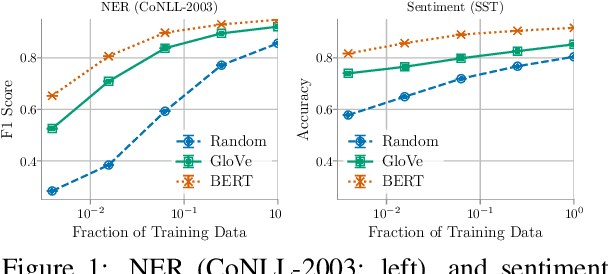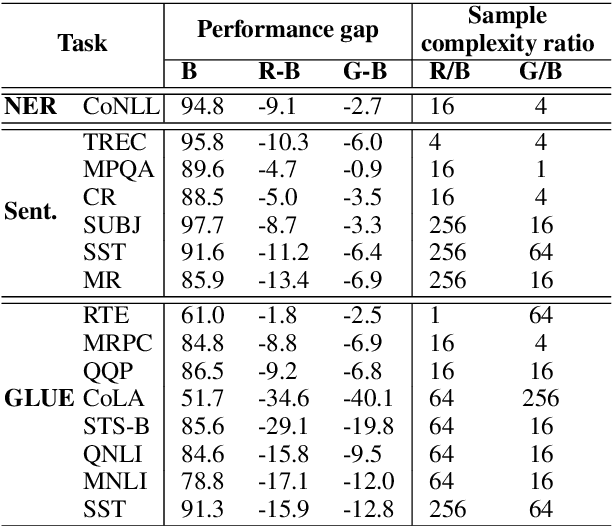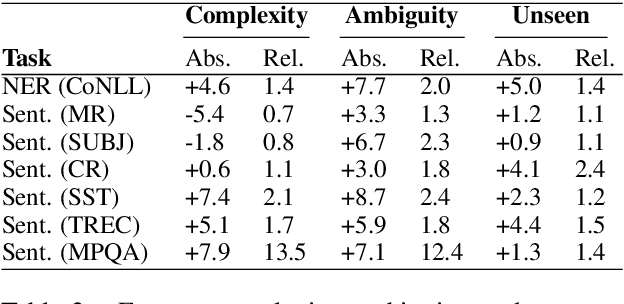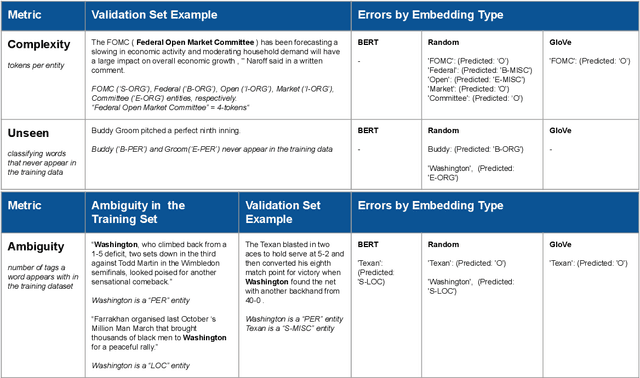Contextual Embeddings: When Are They Worth It?
Paper and Code
May 18, 2020



We study the settings for which deep contextual embeddings (e.g., BERT) give large improvements in performance relative to classic pretrained embeddings (e.g., GloVe), and an even simpler baseline---random word embeddings---focusing on the impact of the training set size and the linguistic properties of the task. Surprisingly, we find that both of these simpler baselines can match contextual embeddings on industry-scale data, and often perform within 5 to 10% accuracy (absolute) on benchmark tasks. Furthermore, we identify properties of data for which contextual embeddings give particularly large gains: language containing complex structure, ambiguous word usage, and words unseen in training.
* ACL 2020
 Add to Chrome
Add to Chrome Add to Firefox
Add to Firefox Add to Edge
Add to Edge